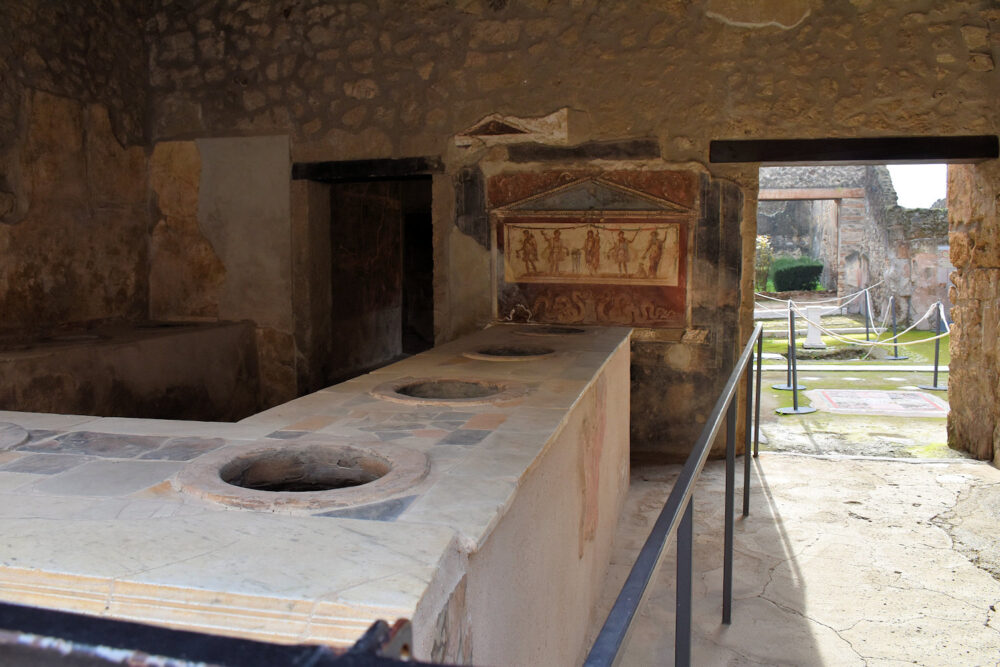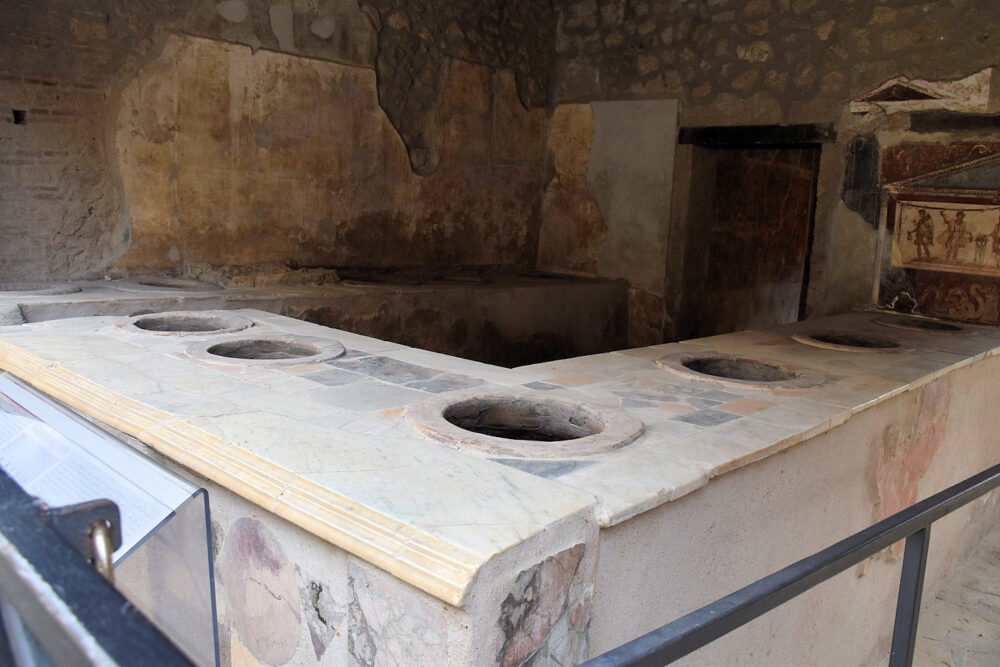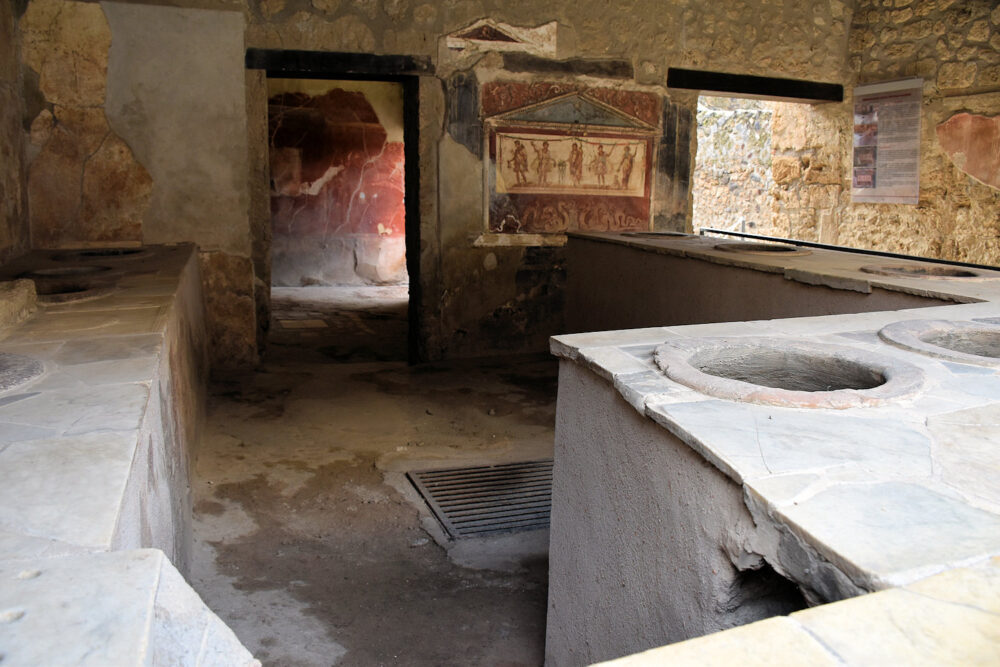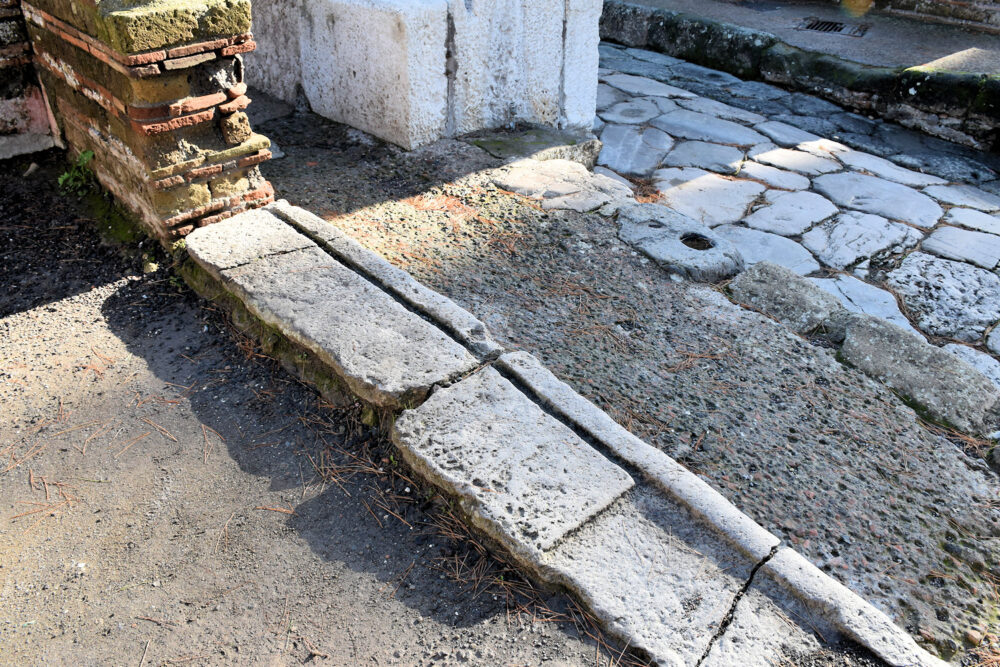From the Pompeii website:
Although the excavated part in Pompeii (which amounts to two-thirds of the old urban area) has 89 thermopolia, small cook-shops where hot food was sold, it does not mean that the wealthy owners of large atrium houses used to dine out. The lower classes frequented such places. When passing through Pompeii, one can see many dwellings and shops within the large houses, which overlook the street and often consist of a single room. Craftsmen and merchants lived and worked here, often living with their families on the upper floors. These homes rarely have a kitchen. Therefore one would dine out, in one of the many thermopolia that offered hot food. Unchanged: Although the excavated part in Pompeii (which amounts to two-thirds of the old urban area) has 89 thermopolia, small cook-shops where hot food was sold, it does not mean that the wealthy owners of large atrium houses used to dine out. The lower classes frequented such places. When passing through Pompeii, one can see many dwellings and shops within the large houses, which overlook the street and often consist of a single room. Craftsmen and merchants lived and worked here, often living with their families on the upper floors. These homes rarely have a kitchen. Therefore one would dine out, in one of the many thermopolia that offered hot food.
Another thermopolium here.Thermopolium, Pompeii, Italy
Thermopolium of Vetutius Placidus. From website, "this thermopolium "represents social mobility in Pompeii in Roman times, where merchants and craftsmen also held a high social status, reserved only to landowners in older times. Drinks and hot food were served in this place, as the name indicates, stored in large jars placed in the richly decorated masonry counter of the tavern. The news stand on the back wall is of great interest; extremely well-maintained, it consists of a lararium dedicated to the protectors of the household(Lari), the Genius protector of the owner, as well as the god of trade (Mercury) and the god of wine (Dionysus). The house is at the rear, interconnected with the shop"
Selling counter of the Grande Taberna, Herculaneum. The large storage jars are easily visible here. The doorway shows the groove that the door slid across.





